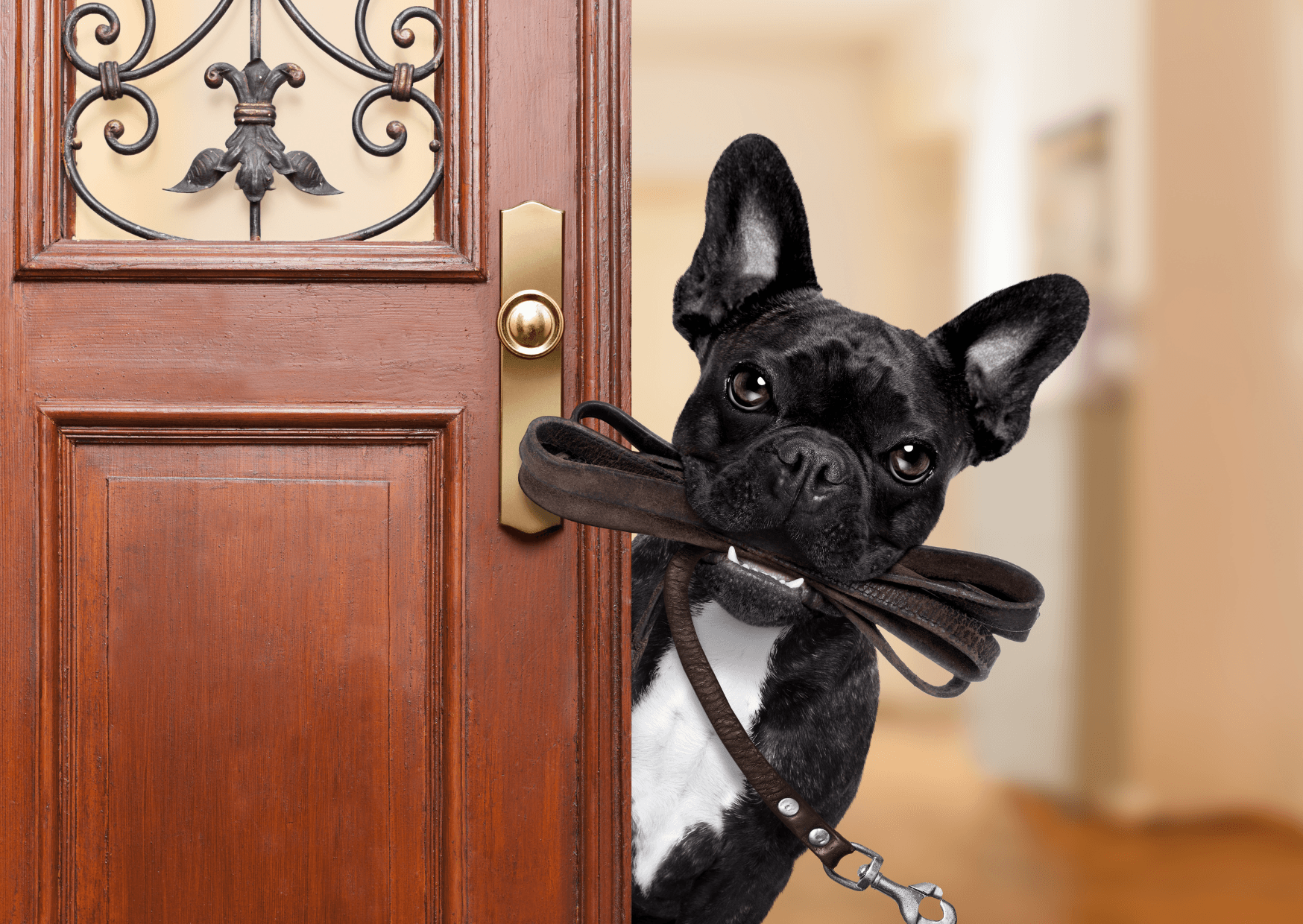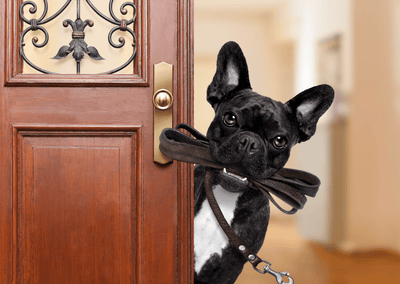Simple walking with your dog is not very popular!

This conclusion comes from a survey of dog owners and this trend is confirmed by many discussions with our customers who ask us about questions of physical rehabilitation, proprioception, physical preparation. We could first of all take an interest in the primitive and mental needs of the dog and explain to you that walking is also an essential part of your dog's happiness, if of course we take into account the different needs of each dog (olfactions, running, chase …).
I will rather focus here on the physical aspect of walking for your life companions, your four-legged athletes or your dogs in rehabilitation and seniors.
Walking allows us to fight against ankylosis and overweight, to lower blood pressure, to have a benefit on our endocrine system and on mood, to reduce stress, to improve transit and digestion, to address proprioception, initiate muscle strengthening, and work on our breathing.
Several questions usually come to mind next.
Which speed and duration to choose?
Not ? This slow pace is the essential basis of any warm-up. The step reduces the impact on the joints, and it is an ally of rehabilitation, old dogs, stressed or too toned dogs or dogs with mechanical breathing problems.
The trot? It mainly allows us to work the cardio-respiratory system in endurance. It is an ally of dogs with poor breathing and functioning of the diaphragm but especially of dogs that do not walk or run straight.
The gallop? This is what is commonly called running, it is the fastest pace that includes a suspension phase. This pace is interesting for power and muscle strengthening exercises, and for split training. It is an ally for specific work or dogs lacking cardio.
Regarding the duration in reality it is enough to be logical! We must obviously adapt the duration of the outing to the age, the physical form and the objective of this walk.
Young dogs or senior dogs or dogs in rehabilitation can only rarely exceed half an hour of walking, so we preferred short but regular outings. For the others as for any training it is enough to be progressive, constant and regular, because we also see the opposite, dogs overworked by the hikes of their bipeds (always adapt according to age, breed, abilities ).
What kind of walk? On leash or free?

For the choice to keep the dog on a leash or not, we must already mention a prerequisite: choose the right equipment. Here again you will find a whole number of fashionable articles or videos for the choice of harness because indeed, it is important to choose a harness that clears the shoulders for this type of activity, therefore in X or Y. A harness must be tried on because each morphology is different.
I strongly advise you to get help and advice from a professional and we can guide you according to your region.
Free walking: It is obviously necessary for the well-being and mentality of the dog and perhaps an ally in certain cases, but be careful to warm up your dogs beforehand because it is all too often used to release stress and crazy races, especially in presence of several dogs and therefore has nothing beneficial!
Walking on a leash: It is really an ally of choice because it allows you to work on the step very often. And even for calm and/or educated dogs it is often essential because it allows us to work on the regularity of cadence, rhythm and strides. In short, it is all too often neglected or wrongly refused.
The difference in height: This is an essential asset for physical preparation or rehabilitation, the choice of favoring the descent or the ascent will be made according to the needs. However, be careful, there are many contraindications, especially for the descent, especially in the event of elbow or shoulder problems. It is the same for the traction effort, also often used for muscle building but not sufficiently corrected and analyzed from a postural point of view which ultimately makes it much more counterproductive.
Whatever the chosen gait and rhythm, the cadence of the gait is essential, it must be constant, fluid and chosen according to the specific needs of the animal.
The weather: Do not hesitate to cover your dog in case of humidity and/or cold and avoid any effort with extreme temperatures (hot or cold) in order to spare the respiratory tracts of your animals, and pay particular attention to the dogs suffering from cardio-respiratory pathologies. Watch out for the ground: frozen, snowy, tarred, hurtful. At ELEMENT VET we have solutions to prevent and cure your pet's pads: our Repair Balm .
Here is a short presentation on the benefits of walking, also applicable to ourselves! Trust yourself, observe your animal, trust your common sense! Hoping that this will make you want to put on your sneakers, take a leash and a harness to the delight of your doggies!
At this time, our Krill , and our reinforced and ideal joint for your animal. Without forgetting our paw care kit to be found right here: s
Our paw care kit





